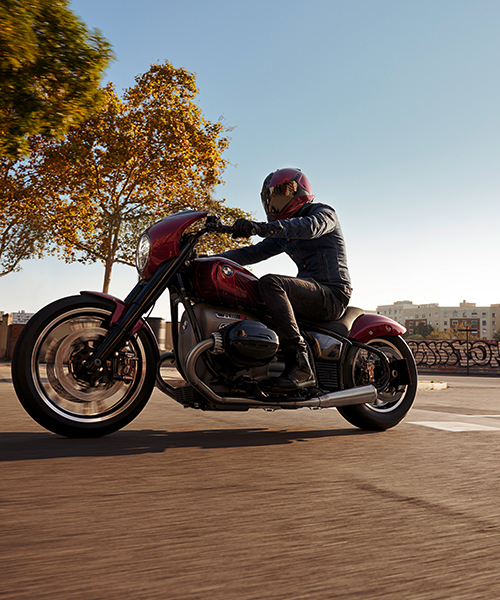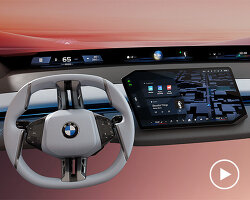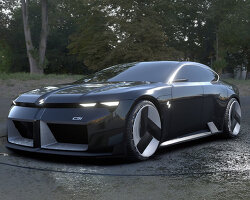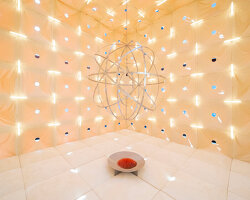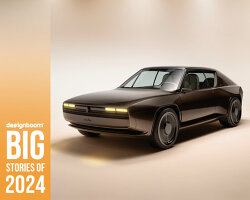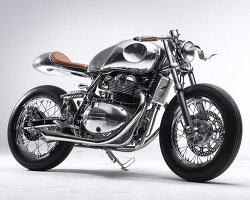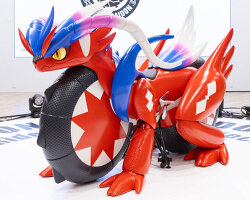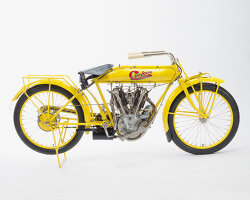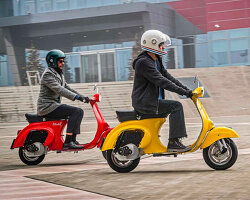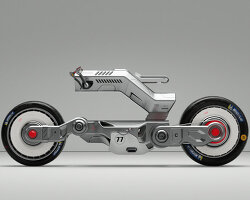beside the shores of the concorso d’eleganza villa d’este at lake como, italy, BMW unveiled the concept R 18 as an analog statement in a digital age. with a black frame reminiscent of their design icons and devoid of technological screens and equipment, it fitted stylistically alongside the historic motorcycles and cars at the concours. however, the concept was actually just the start of a much bigger idea for BMW, specifically one surrounding the customization of large boxer engines. at EICMA 2019, the brand then revealed the concept R 18 /2 as the original bike’s modern and highly flexible sibling. the two visions showcase how BMW motorrad is designing a future that merges historic, beloved traditions with innovative technology that caters for customization. they highlight how just one type of engine can be adapted to fit many personalities.
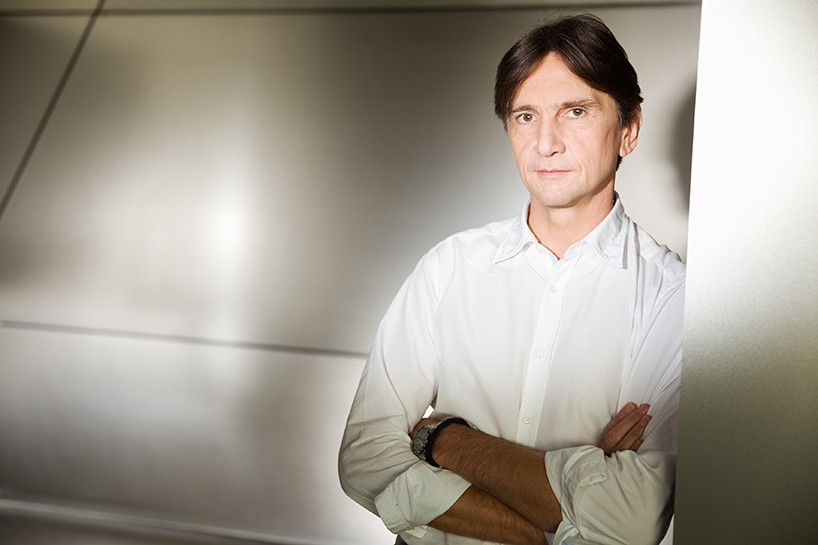
portrait of edgar heinrich, head of design BMW motorrad
at the concorso d’eleganza villa d’este 2019, designboom spoke with edgar heinrich, head of design BMW motorrad, as he delved into the changing dynamics within motorcycle design.
designboom (DB): how does the design process start for BMW motorrad?
edgar heinrich (EH): first of all, the design process always depends on whether we decide to create a new design, redesign or a facelift. however, overall, first we always have to differentiate between the new design and bikes we have already created. then, with the actual designing, we start by selecting the basic package which is all about proportions, for example if it is going to a sports bike or cruiser. we always create two design models: one is a bit more advanced; and the other is a bit more traditional. the board then decides which direction to pursue, and that starts the second loop of refinement until the confirmation model is finalized. this model is usually made in clay or from milling, before being painted to look as if a real motorbike. once the board has approved the confirmation model, we then enter a two year process to set up production. overall, the process takes around four and half years to complete.
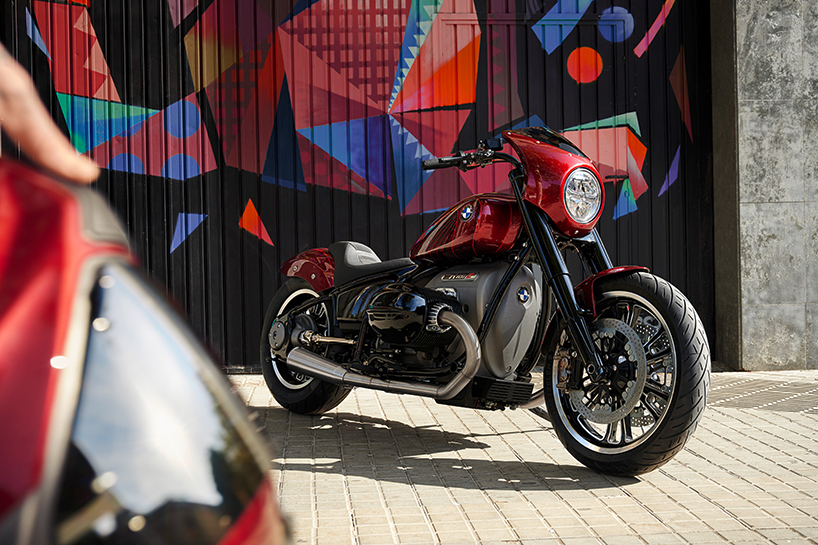
the concept R18 /2 (main image too)
DB: do customers still want to see motorbikes made with a focus on craftsmanship and honest mechanics?
EH: as good craftsmen themselves, our customers always expect high levels from BMW and we have to deliver. they test and evaluate our designs, from the look to the sound and feel. however, at the same time, BMW motorcycle design is all about good proportions and then the little details that define high-end craftsmanship.
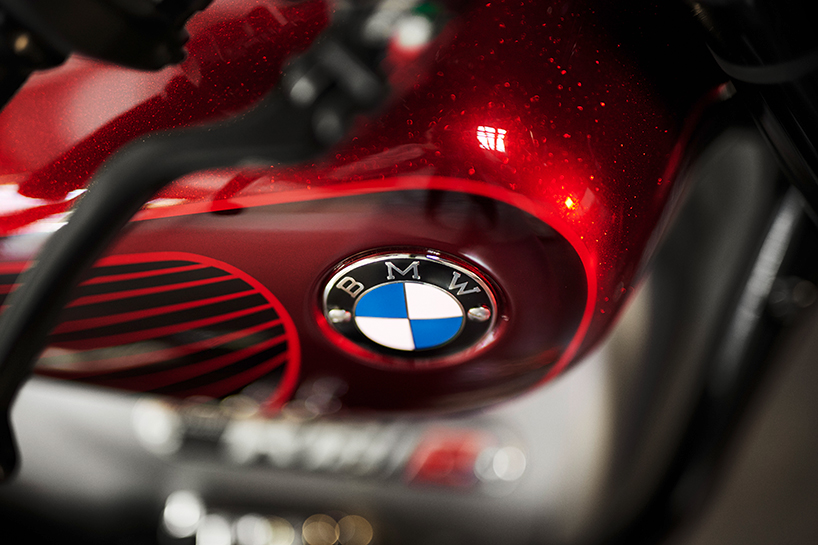
the concept R18 /2
DB: how do notions of customization influence your design choices?
EH: this depends a lot on the motorcycle segment. people always want to express their attitude and style through their ride, but everyone does this in a different way. for example, cruisers are often used as a blank canvas for owners to add individualization of their own creativity whilst owners of sports bikes add performance parts. if our customers do want to customize, we have always found it important to offer BMW-approved methods and parts rather than forcing them to go to the aftermarket.

the concept R18 /2
DB: as electrification opens up a whole new set of parameters aesthetically for motorcycle design, how has these developments affected BMW’s design process?
EH: with electrification, it is a very exciting time for motorbike designers at BMW. we have always created pure, emotional bikes but now we must heavily think about sustainability as well. as designers, we are trying different methods and experimenting to deliver the best results to guide us into the electric field. we are really proposing new, interesting questions and brainstorming to find new concepts with electricity.
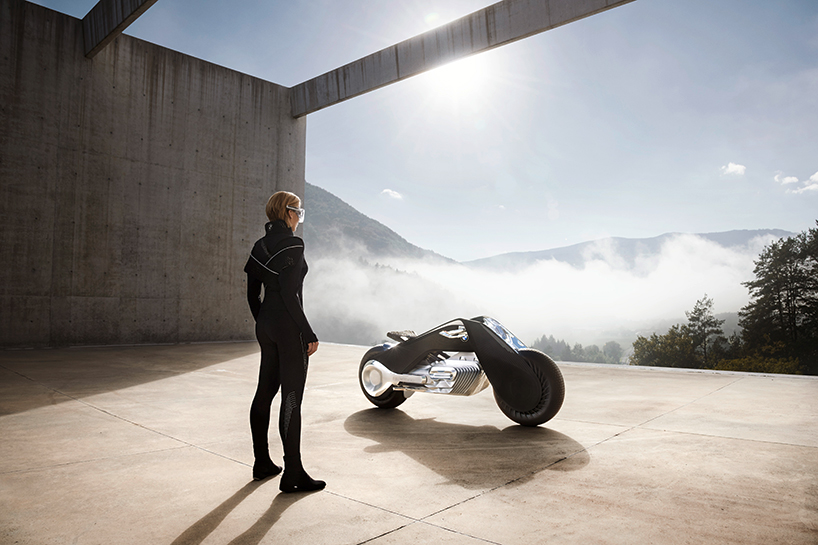
the BMW VISION NEXT 100 shown in 2016
DB: the BMW VISION NEXT 100 was a bold statement from the brand. was this an exploration of an electric concept or more a vision of possible styling and technology in the future?
EH: the VISION NEXT 100 conceptualized what a BMW motorcycle might appear like in the next 30 years or so. we specifically didn’t state whether it was powered by a combustion engine or hydrogen or electricity. instead, it envisioned how our emotions – and our customers – could be balanced through merging tradition and high technology in the future. it combined beautiful analog elements with super intelligent software that made the bike so safe – riders do not need to wear a helmet! it showcased how riding is something for everyone to enjoy.
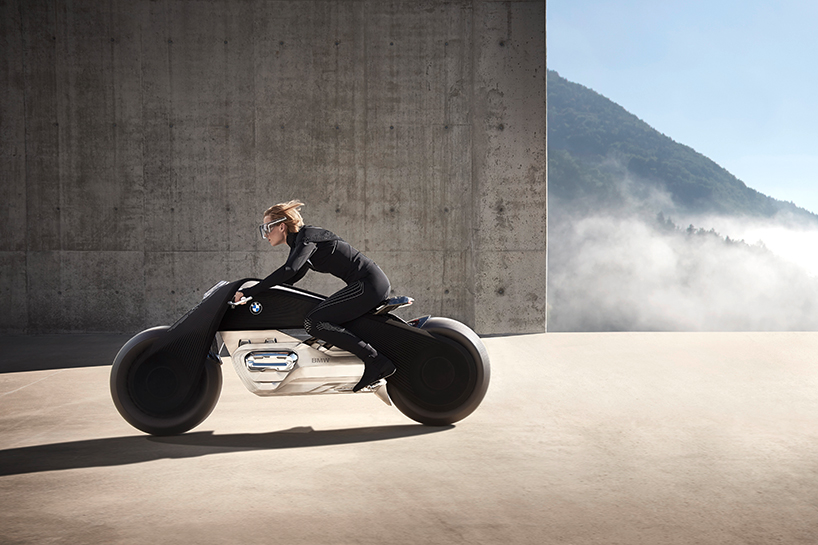
the BMW VISION NEXT 100 shown in 2016
DB: the concept R18 also reinterprets retro elements for the modern day, why was that?
EH: for the concept R18, we basically started with a blank sheet of paper with no limitations, because it was not set for a specific segment. we were able to add everything we loved from the history of motorcycles together with everything we find interesting in technology fields right now.
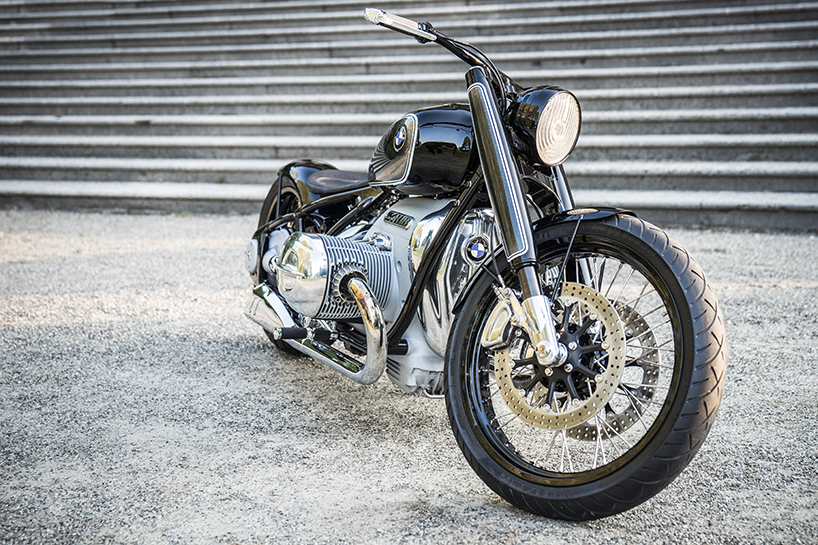
the concept R18 at the concorso d’eleganza villa d’este
DB: for the concept R18, what was the hardest part to realize, from its design, execution or simply getting the project passed management?
EH: as BMW is a company that, for over 100 years, has tried to constantly innovate for the better, it was strange for a design to not have technology as its driving factor. instead, emotions are at the forefront. for the concept R18, our designers took center stage of its creation, not engineers. this was hard for our engineers as they normally push designs for the very best performance, not appearance.
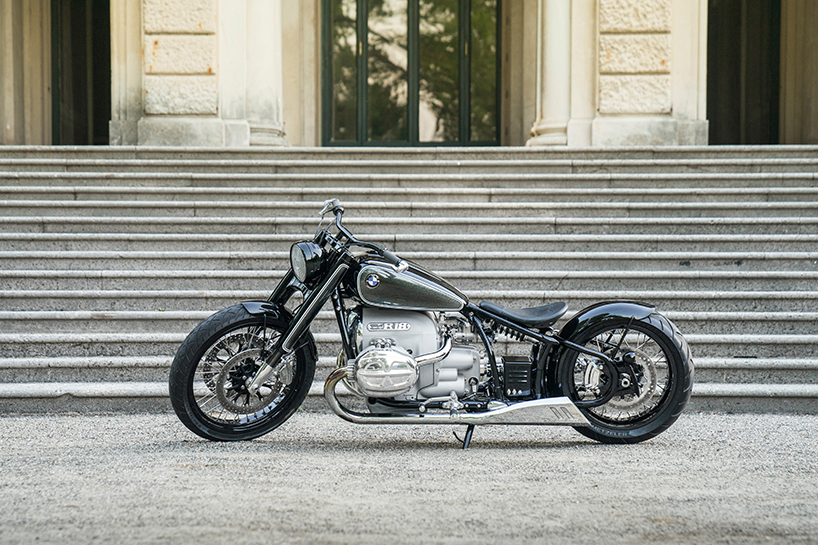
the concept R18 at the concorso d’eleganza villa d’este
DB: similarly to how retro elements are coming back into trend for motorcycle design, how is BMW’s clientele constantly evolving and revolving?
EH: different generations’ interest in motorbikes have fluctuated over the many years, but right now, young people are getting more and more interested in motorcycles again. this is due to performance factors as well as lifestyle and coolness. motorbikes have always been a statement about who you are, whether you want to look cool or be adventurous.
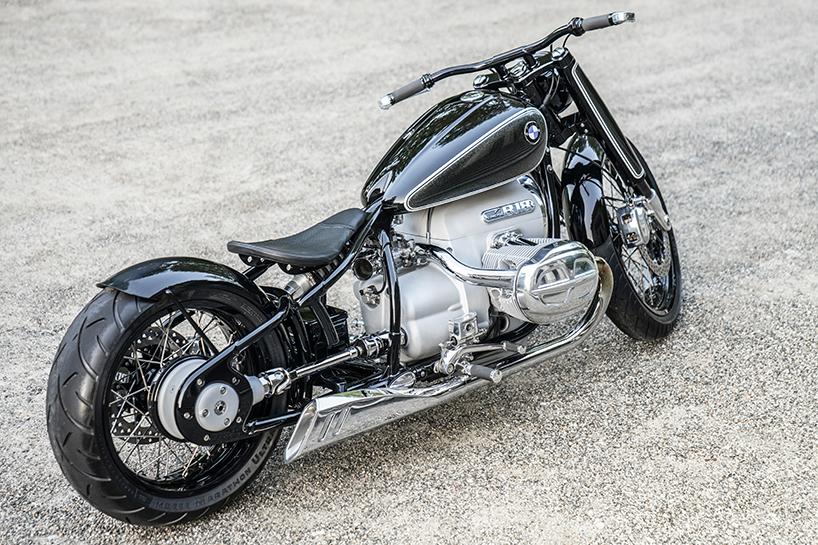
the concept R18 at the concorso d’eleganza villa d’este
DB: lastly, what changes at BMW, especially over your time at the company, mirror this increasing interest in motorcycles?
EH: when I first joined 30 years ago, BMW’s motorbikes were completely about german practicality. the R1100S from the mid-1990s or the K1200R, for example, helped shift away from this. the latter was the first BMW motorbike that was not explainable in a rational way. it was a stupid, crazy bike but it was super cool. afterwards people then understood that BMW motorcycles were all about emotions.
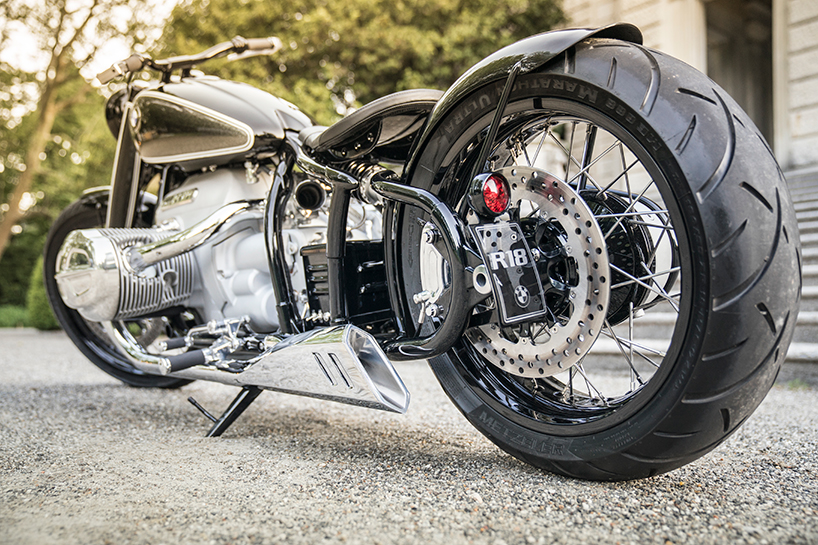
the concept R18 at the concorso d’eleganza villa d’este
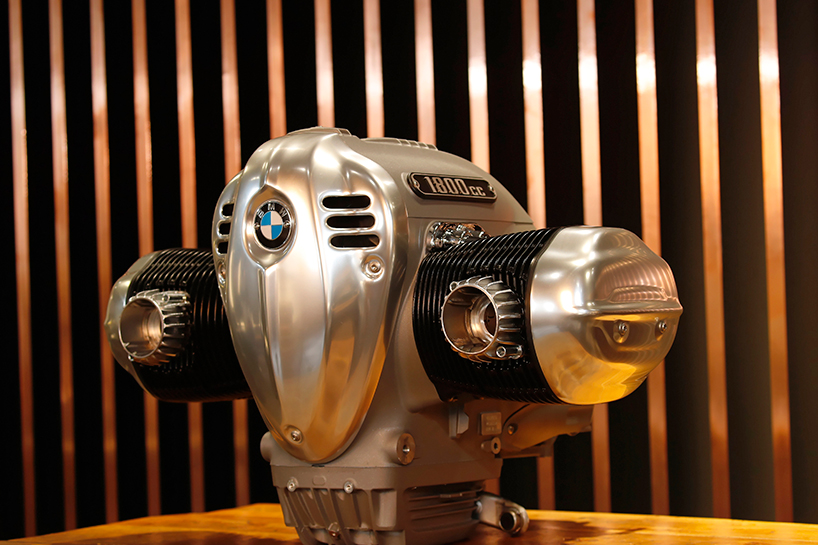
big boxer engine of both the concept R18 designs
